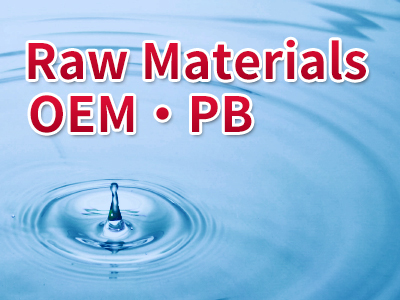Articles
Osteoporosis

Osteoporosis is a disease that raises the risk of bone fracture as the reduction in bone density makes the bones friable. It is more common in elderly and postmenopausal woman. Keeping strong bones is important for good quality of life for one’s entire lifetime. Moreover the latest research has shown that “aging of skin” is deeply connected with “aging of bone”.
What is Osteoporosis?
Osteoporosis means “porous bone” and is a condition that occurs naturally with aging. The condition involves the mineral density of the bones being reduced, the structural integrity breaking down and changes in the components that form the structural matrix. In the normal, young, healthy person bone resorption (breaking down of bone) and bone rebuilding (bone deposition) take place at a balanced level thus maintaining the integrity of the bone structure. Osteoporosis occurs when the rate of bone resorption exceeds that of bone deposition.
There are three classes of osteoporosis, Primary type 1, Primary type 2 and Secondary with Primary type 1 osteoporosis mainly affecting women following menopause, Primary type 2 affecting both men and women being directly due to advanced age. Secondary osteoporosis is different in that it can occur at any age, affects men or women equally and is caused by disease, medical predisposition or long term use of medications such as steroids.
For post menopausal women the loss of estrogen has a major impact on the integrity of the bone structure since estrogen plays an important role in the balancing of bone resorption and bone deposition. A deficiency in calcium and vitamin D will compound this situation significantly leading to an advanced rate of osteoporosis development. A general recommendation for women over the age of 55 is that at least 1500mg of calcium per day is needed together with 600 to 800iu of vitamin D. However some of the calcium may come from the diet and vitamin D from exposure of the skin to the sun. Supplementation will be necessary when the diet does not contain sufficient calcium and in areas where exposure to sunlight is minimal.
Type 2 osteoporosis is a natural occurrence in both men and women over the age of 60 years simply due to reduced activity of the osteoblastic cells that are responsible for bone deposition. Additional risk factors for this age related condition include ethnic origin, body mass, lifestyle, build and gender. Smoking and excessive consumption of alcohol also have a significant effect. People of small stature in some Asian countries have a predisposition for osteoporosis as do overweight people having a sedentary lifestyle.
Minimising the Effects of Osteoporosis.
As aging is a major factor in the development of osteoporosis it is helpful to be aware of ways to reduce the risks associated with this condition. The main risks are fractures due to falls with spinal fractures being the most common. However, hip fractures are also common and it has been estimated that 24% of hip fractures due to falls in the USA have resulted in death.
Fortunately it is possible to minimise the effects of osteoporosis by adapting lifestyle changes and eating a healthy diet. Regular weight bearing exercise such as walking and light sporting activities such as swimming, tennis or golf are beneficial for stimulating the formation of new bone. The emphasis here is on ‘regular’ but not necessarily of long duration for each session. A 30 minute walk three times a week will be more beneficial than a single ninety minute walk once a week.
A healthy diet should contain a good balance of green vegetables and fish with not too much meat. These will supply calcium in an easily assimilated form plus protein and omega 3 fatty acids to help maintain the cardiovascular system. The use of light cooking oils in preference to fats will be beneficial Supplementary calcium and vitamin D plus regular, moderate exposure to sunlight where possible will aid bone deposition. Limiting, but not necessarily stopping, consumption of alcohol and also beverages high in caffeine will also be beneficial as will maintaining a healthy bodyweight.
Medications are also available to help reduce the deterioration of the bone structure in osteoporosis. These include bisphosphonates: which are non-hormonal medications that can increase bone density by reducing the rate of bone loss. They have been shown to reduce the fracture rate in people with osteoporosis. However, a common side effect of these medications is nausea and indigestion which limits their use for some people. Another is hormone replacement therapy (HRT). This involves medications that include oestrogen HRT has been shown to reduce bone loss and may increase bone density but recent research has indicated that there are risks with long term HRT use. Selective Oestrogen Receptor Modulators (SERMs): A class of medications called selective oestrogen receptor modulators (SERMs) can be used to prevent and treat osteoporosis. They work by mimicking the effects of oestrogen and are a substitute for women post menopause who are unable to tolerate oestrogen.
References
- Osteoporosis New Zealand (Inc), Wellington. What is Osteoporosis?. Osteoporosis New Zealand (2011)
- National Osteoporosis Foundation. Clinician’s Guide to Prevention and Treatment of Osteoporosis. Washington, DC, National Osteoporosis Foundation, 2010.
- L. Kathleen Mahan; Sylvia Escott-Stump. Nutrition and bone health. Krause’s Food and Nutrition Therapy, 12th ed., pp. 614-635. St. Louis: Saunders Elsevier. Anderson JJB (2008).
- North American Menopause Society. Management of osteoporosis in postmenopausal women: 2010 position statement of The North American Menopause Society. Menopause 2010 Jan-Feb, 17(1), 25-54
- Park-Wyllie LY; Mamdani MM; Juurlink DN; Hawker GA; Gunraj N; Austin PC; Whelan DB; Weiler PJ; Laupacis A. Bisphosphonate use and the risk of subtrochanteric or femoral shaft fractures in older women. JAMA 2011 Feb 23, 305(8), 783-789

